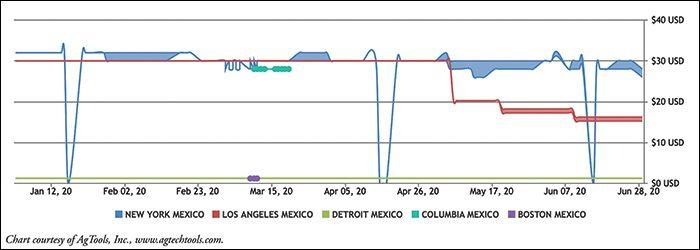Jackfruit, also known as Artocarpus heterophyllus, is a majestic fruit that has captured the hearts and taste buds of people around the world. With its origins in the lush Western Ghats of India, this fruit has a rich history as one of the first cultivated fruits. Today, it remains a staple food in countries like India, Myanmar, China, Malaysia, Sri Lanka, Indonesia, and the Philippines.
A Fruit of Many Names and Sizes
Jackfruit is often referred to by various names such as jak, jaca, nangka, khanun, khnor, maki mi, may mi, and mit. It is no wonder that this versatile fruit has garnered so many names, considering its impressive size and distinctive characteristics. Jackfruits can weigh up to 35 pounds, with some exceptional specimens reaching a whopping 144 pounds. The exterior of the fruit is inedible, but the flesh inside can be cooked or enjoyed fresh.
Ripened jackfruit has a unique aroma that has been described as a peculiar combination of bananas and stinky cheese. Some even compare it to the scent of sweaty socks. Due to this strong smell, it is recommended to slice and prepare the fruit outdoors, followed by immediate disposal of the rinds. Surprisingly, every part of the jackfruit tree can be utilized, including the trunk, leaves, fruit, and seeds. Its versatility extends beyond being consumed fresh, as it can also be cooked, canned, or processed into ice cream, jam, jellies, or pastes. In fact, its high nutritional value and meat-like texture when cooked have earned jackfruit the status of a popular meat substitute.
Types and Varieties
As jackfruit gains popularity in the United States, there is still ongoing research to determine the optimal cultivars for this market. Generally, jackfruit comes in two main types: firm or soft. In the United States, recommended varieties include Black Gold, Dang Rasimi, Golden Nugget, Honey Gold, Kun Wi Chan, Lemon Gold, and NS1. These varieties have been developed in Australia and Malaysia. The outer skin of jackfruit turns from greenish to brownish yellow when it ripens, revealing a flesh or pulp that ranges in color from amber to dark yellow or orange. Jackfruit is also a compound fruit, containing between 100 and 500 seeds, which can be cooked and enjoyed with a flavor reminiscent of chestnuts. Additionally, when the tree or fruit is damaged, it releases a sticky, white, rubbery latex that has adhesive properties.
Cultivating Jackfruit
Jackfruit trees are evergreen and can reach heights of up to 80 feet, although they typically grow to be around 30 to 40 feet tall in the United States. They thrive in tropical and subtropical environments, requiring rich, deep soil for proper root development. These trees are sensitive to overly wet soil conditions and temperatures below 28°F before maturity. While jackfruit prefers ample sunlight, excessive exposure can result in sun scald. Fruit production usually begins in the third or fourth year, with the fruit reaching maturity on the tree and ripening after harvest. Identifying mature jackfruit can be a challenge, but certain characteristics such as a change in skin color, spaced-apart spines, yellowing of the last leaf on the stalk, and a dull, hollow sound when tapped, can indicate its readiness for harvest. The large size and weight of jackfruits make harvesting a labor-intensive task. Typically, the fruit is cut from the tree using clippers or loppers while standing on a ladder. It is best to harvest during mid-morning to afternoon when the sticky latex sap is less likely to flow. Coating tools with vegetable oil helps prevent the latex from sticking. A high-quality jackfruit should have good size, vibrant color, a rounded shape, and no signs of damage or decay.
Pests and Diseases
Jackfruit is still relatively new to the commercial market in the United States, which means that research into pests and diseases is ongoing. However, some common pests have been identified. Larvae from longicorn beetles can destroy plant stems, leading to reduced yields. The oriental jackfruit fly can also be a significant issue, but covering the fruit with protective bags during development can help control infestations. Jackfruit is susceptible to various boring insects, bud weevils, spittle bugs, mealybugs, scales, thrips, and aphids. Mammals such as civet cats and wild boars may also feed on and damage the fruit. Root rot can occur if the soil remains overly wet for long periods, especially during flooding. Additionally, diseases like pink rot, stem rot, fruit rot, male inflorescence rot, and leafspot can significantly impact production and fruit quality.
Storage and Packaging
While research on optimal storage and processing techniques for jackfruit is limited, it is recommended to keep the fruit cool at temperatures between 52°F and 55°F with a relative humidity of 85% to 95%. Brief exposure to ethylene gas can aid in ripening.
References: California Rare Fruit Growers, Purdue University Extension, UC Davis Postharvest Technology Center, University of California, University of Florida/IFAS Extension, University of Hawaii.


